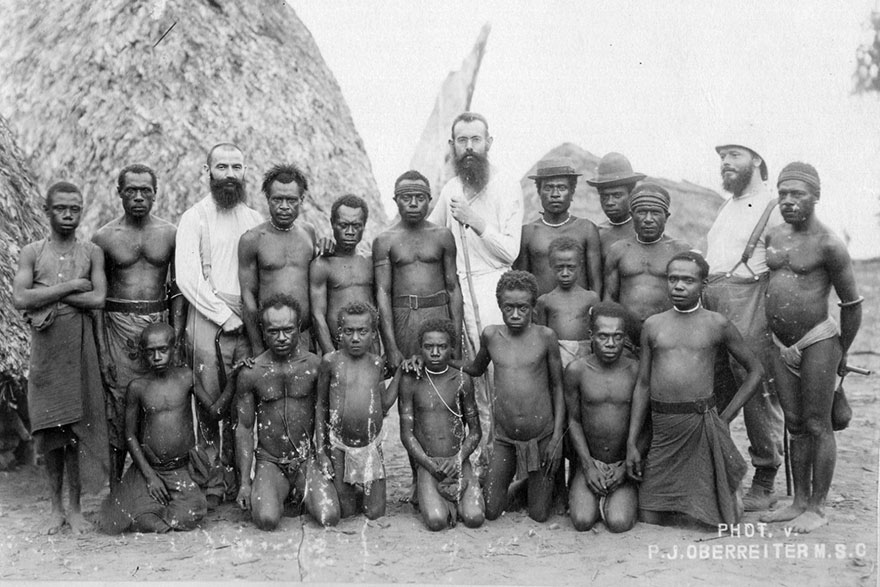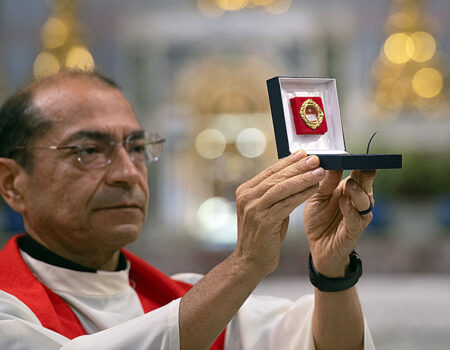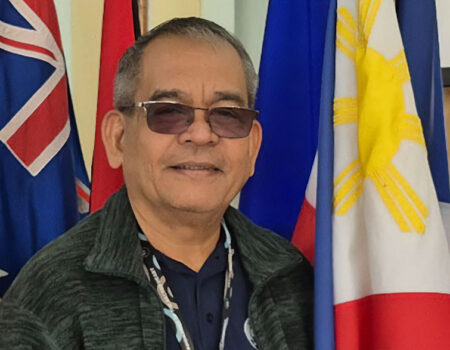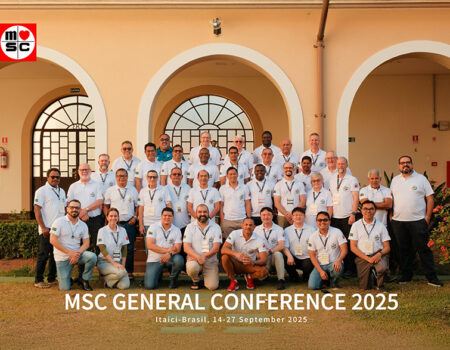Papua: A faith enriched by the work of the Missionaries of the Sacred Heart
Saturday October 11, 2025

Archbishop Rochus Joseph Tatamai, MSC, of the Archdiocese of Rabaul in Papua New Guinea, talks about Pope Francis’ visit: “Even though we are far away and on the periphery, we have a vibrant Church, we have a vibrant faith, and our young people still fill our churches”.
Collaboration with Vatican News and L’Osservatore Romano. Claudia Torres
The Missionaries of the Sacred Heart (MSC) have maintained a continuous presence in Papua New Guinea since their arrival on 29 September 1882, making them an intrinsic part of the history and mission of the Catholic Church in the country and a point of reference these days, including in the education and health care sectors. This was stated by Archbishop Rochus Joseph Tatamai, MSC, Archbishop of Rabaul, in a telephone interview on the eve of Pope Francis’ visit to Papua New Guinea, 6-9 September.
In the 19th century, the Missionaries of the Sacred Heart arrived from different parts of the world, and divided their pastoral work, with each group taking charge of a different area of Papua New Guinea. “The French and the Swiss looked after everywhere from Yule Island, which is now the diocese of Bereina, to Kerema and back to Daru-Kiunga and Mendi,” the archbishop explained. “The Australian MSCs took care of Port Moresby and Alotau-Sidea, while the Germans took care of Rabaul and Kimbe.” American and Irish missionaries arrived later.
However, the Missionaries of the Sacred Heart were not the only catalysts for early evangelisation. The Marists, the PIME [Pontifical Institute for Foreign Missions] and, later, the Divine Word Missionaries also played a key role.
This mosaic of missionaries from different countries encountered an already rich tapestry of a multicultural country with more than 800 different languages, where spreading a Gospel message to all was no easy task. The Archbishop explained that “the main challenge from the beginning was the challenge of understanding, because when the missionaries came none of them spoke the local language”. The geographical isolation of many tribes further exacerbated this problem. “Those living on the border lines had the advantage of speaking several languages because of their association with the different borders and ethnic groups,” he explained, while those in more remote areas did not.
To overcome this challenge, the missionaries lived among the people and learned their language. In this way, the archbishop explained, the missionaries were able to “understand the inner world, the Melanesian worldview” of the people, thus transforming a barrier into an opportunity for evangelisation. “For me,” he added, “it is so, so profound that the first missionaries, although the Vatican Council spoke of inculturation in the late 1960s, the first Missionaries of the Sacred Heart who came to our shores, although they had to overcome the barrier of trying to understand the language, they immediately use the languages and the customs, the cultural values, to be able to try to see an integration and above all trying to proclaim the Good News to the people.
The interview then focused on the figure of Blessed Peter To·Rot, beatified by Pope John Paul II on 17 January 1995. During the Second World War, the lay catechist, whose parents were among the first in Papua New Guinea to be baptised by the Missionaries of the Sacred Heart, taught the Catholic faith to local communities in defiance of orders from the Japanese occupation forces. As a result, he was arrested and eventually martyred by the Japanese police. “For me – shared Archbishop Tatamai – whose grandfather was Peter To·Rot’s brother, Blessed Peter To·Rot represents the strong collaboration between missionaries and catechists. And the catechist is the intermediary person who understands the local culture and the people. And the missionary always dialogues with the catechist. And the catechist is the one who communicates and simplifies these things to the local people and the local culture”.
Pope Francis has given the go-ahead for the Blessed’s canonisation, although a date has not yet been set. “People are very, very happy and very confident that what Peter To·Rot represents for us is indeed the Church in Papua New Guinea and in Melanesia, and especially the Papua New Guinea Solomon Islands Conference,” the Archbishop said. “It highlights the laity and their contribution to the work of humanisation. And all that the Church in Papua New Guinea can offer at this time is really the emphasis on the spirituality of the laity and active participation in the book of evangelisation.” He also noted that Pope Francis himself has told missionaries that “Peter To·Rot represents the kind of saint we need today, especially for the challenges that are robbing the beauty of the sacrament of marriage and the foundation of all societies, family life”.
The Archbishop concluded by expressing optimism about Pope Francis’ visit, which, he said, will see “a greater rebirth and a rebirth of faith among the elderly, the older, the oldest, but also among our younger generation”. He said that “even though we are far away and on the periphery, we have a vibrant Church, we have a vibrant faith and our young people still fill our churches”.





